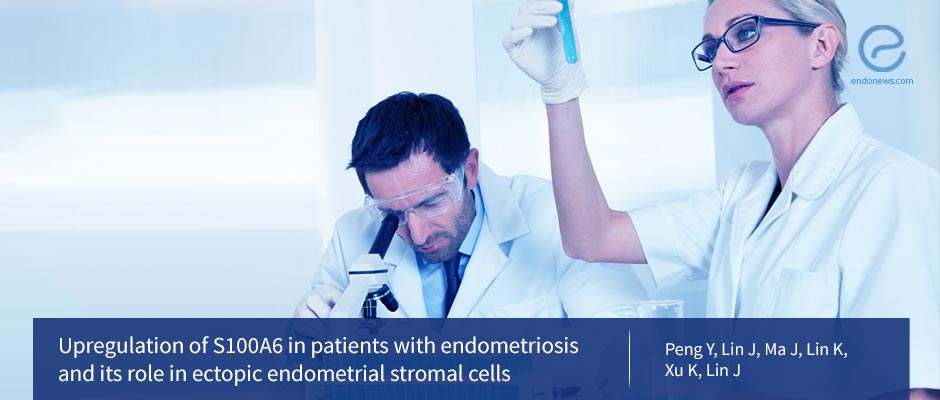S100A6 May be a Promising Target for Endometriosis Treatments
May 10, 2018
S100 calcium-binding protein A6 is high in ectopic endometrial tissues and maybe a target for Endometriosis treatments.
Key Points
Highlights:
-
S100A6 has a role in endometriosis disease progression and S100A6/CacyBP/p38 signaling pathway may be a potential target for future treatments.
Importance:
- Ectopic endometrial tissues have higher levels of mRNA and protein expression of S100A6 in comparison to the eutopic and normal endometrial tissue, and silencing leed to cell viability, migration, and inhibition of invasion suggesting a potential for therapeutic targetting
What’s done here?
- The researchers collected ectopic and eutopic endometrial tissues during the proliferative phase of the menstrual cycle from participants who had stage III to IV endometriosis. The endometrial tissues during the proliferative phase of the menstrual cycle from a set of patients that did not have any visible endometriosis were used as the control.
- The experimental process includes immunohistochemistry, immunofluorescence, isolation and culturing of the ectopic ESCs, real-time quantitative PCR for relative gene expression, protein extraction, western blot analysis, small interfering RNA (siRNA) transfection, CCK-8 assay, wound healing, and a transwell migration/invasion assay.
- The data from this experiment was subject to extensive statistical analysis.
Key results:
- Compared to the other tissues, the ectopic endometrial tissue had the higher levels of expression of S100A6.
- The silencing S100A6 in ectopic endometrial stromal cells (ESCs) led to decreased cell viability, cell migration, and cell invasion.
- S100A6 knockdown led to p38/MAPK activity suppression in ectopic ESCs. The researchers believe that this result can be partially weakened by a CacyBP/SIP phosphorylation inhibitor.
Limitations of the study:
- The in vitro nature of the experiment may lead to differences in behavior of the key molecular players.
Lay Summary
Peng et al., a group primarily from the Zhejiang University Medical College, recently published a paper in Gynecological Endocrinology titled “Upregulation of S100A6 in patients with endometriosis and its role in ectopic endometrial stromal cells.” This paper delineates a study that sought to understand the role of S100 calcium-binding protein A6 (S100A6) in endometriosis disease progression. The researchers paid particular attention to S100A6 expression in women with endometriosis and looked at potential functional roles played by S100A6 in ectopic endometrial stromal cells (ESCs) and the impacts S100A6 has on the MAPK-signaling pathway to elucidate a link between p38 MAPK activation and CacyBP/SIP activity in ectopic ESCs.
The researchers collected ectopic and eutopic endometrial tissues from women with Stage III and IV endometriosis. They also collected endometrial tissues from a group of control participants who did not have visible endometriosis. The experimental procedure for this study is made up of many smaller experiments. The different parts of the experimental process include immunohistochemistry, immunofluorescence, isolation and culturing of the ectopic ESCs, real-time quantitative PCR, protein extraction, western blot analysis, small interfering RNA (siRNA) transfection, CCK-8 assay, wound healing, and a transwell migration/invasion assay. The data from this study was subject to statistical analysis.
The researchers found that the ectopic endometrial tissues had higher levels of mRNA and protein expression of S100A6 in comparison to the eutopic and normal endometrial tissue.
They also discovered that S100A6 silencing in ectopic ESCs led to cell viability, migration, and invasion inhibition. S100A6 knockdown in ectopic ESCs also led to p38/MAPK activity suppression. The authors believe that this aforementioned result can be partially weakened by a CacyBP/SIP phosphorylation inhibitor.
In conclusion, S100A6 has a role in endometriosis disease progression and S100A6/CacyBP/p38 signaling pathway may be a potential target for future treatments.
Research Source: https://www.ncbi.nlm.nih.gov/pubmed/29544367
S100A6 endometrial stromal cells targeted therapies MAPK p38 CacyBP

